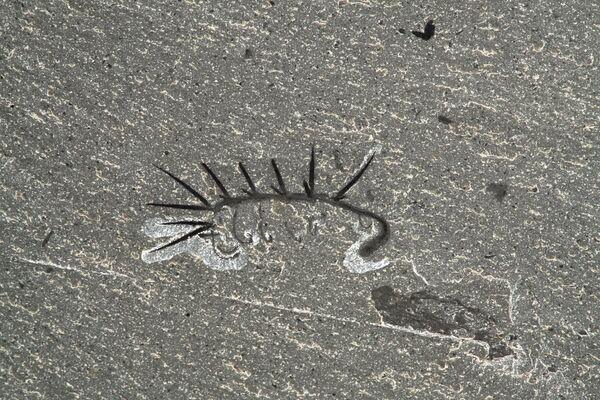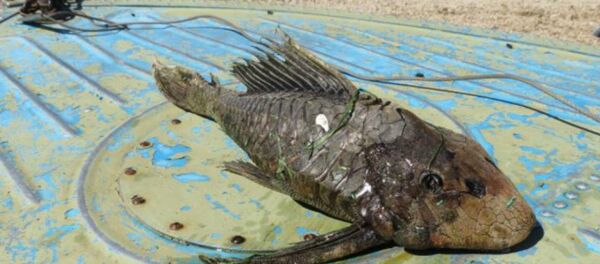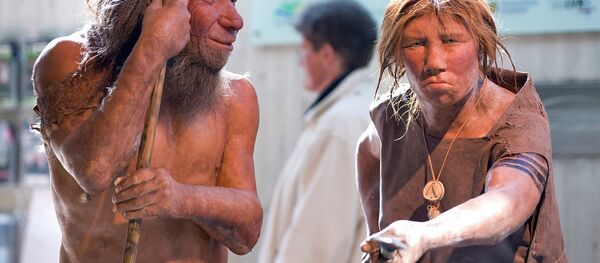"A large balloon-like orb at one end of the specimen was originally thought to be the head, but we can now demonstrate that this actually wasn’t part of the body at all, but a dark stain representing decay fluids or gut contents that oozed out as the animal was flattened during burial."
Hallucigenia was identified by British paleontologist Simon Conway Morris in the 1970s, who gave it the name 'Hallucigenia sparsa' because of its strange appearance. Previous attempts at reconstructing the creature mistook its tail for its head, and the spines along its back were thought to be legs.
great to see #Hallucigenia back in the news, with some new teeth & jaunty animation http://t.co/AQtwXjrN9B https://t.co/KCywrpKQYK #fossils
— Liz Hide (@TheMuseumOfLiz) 25 июня 2015
In August last year year scientists published the results of a previous study of Hallucigenia, which analysed its claws and was able to finally place it in the 'Tree of Life,' as a precursor to modern velvet worms, part of the massive group of moulting animals, known as ecdysozoans and including arthropods and water bears.
According to the research published on Wednesday in the journal Nature, the creature had an elongated head with simple eyes, and a throat lined with needle-like teeth. The discovery of its teeth has helped scientists to determine that velvet worms originally had the same configuration of teeth, but lost it through evolution.

"We previously thought that neither velvet worms nor their ancestors had teeth. But Hallucigenia tells us that actually, velvet worm ancestors had them, and living forms just lost their teeth over time."
Hallucigenia were between 5 and 35 mm in length and lived on the ocean floor during the Cambrian Explosion, a period of rapid evolution when most major animal groups first appear in the fossil record.



